The Phison E12 Reference Design Preview: A Next-Gen NVMe SSD Controller
by Billy Tallis on July 18, 2018 10:30 AM ESTMixed Random Performance
Our test of mixed random reads and writes covers mixes varying from pure reads to pure writes at 10% increments. Each mix is tested for up to 1 minute or 32GB of data transferred. The test is conducted with a queue depth of 4, and is limited to a 64GB span of the drive. In between each mix, the drive is given idle time of up to one minute so that the overall duty cycle is 50%.
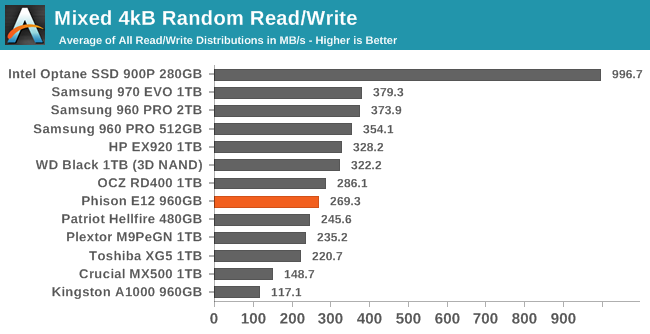
The mixed random I/O performance of the Phison E12 is unimpressive for its intended market segment: The HP EX920 and WD Black are 20% faster overall and the Samsung 970 EVO is 40% faster. The E12 delivers only a modest improvement over the previous-generation E7 controller.
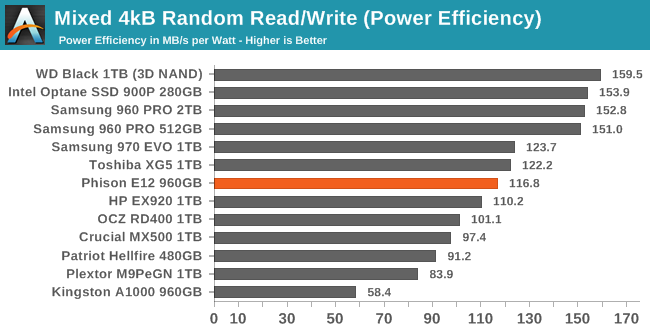 |
|||||||||
| Power Efficiency in MB/s/W | Average Power in W | ||||||||
The power efficiency of the Phison E12 during the mixed random I/O test is better than most TLC SSDs, but it is slightly beat out by the low-power Toshiba XG5 and top-performing Samsung 970 EVO, and they're all overshadowed by the extremely efficient WD Black.
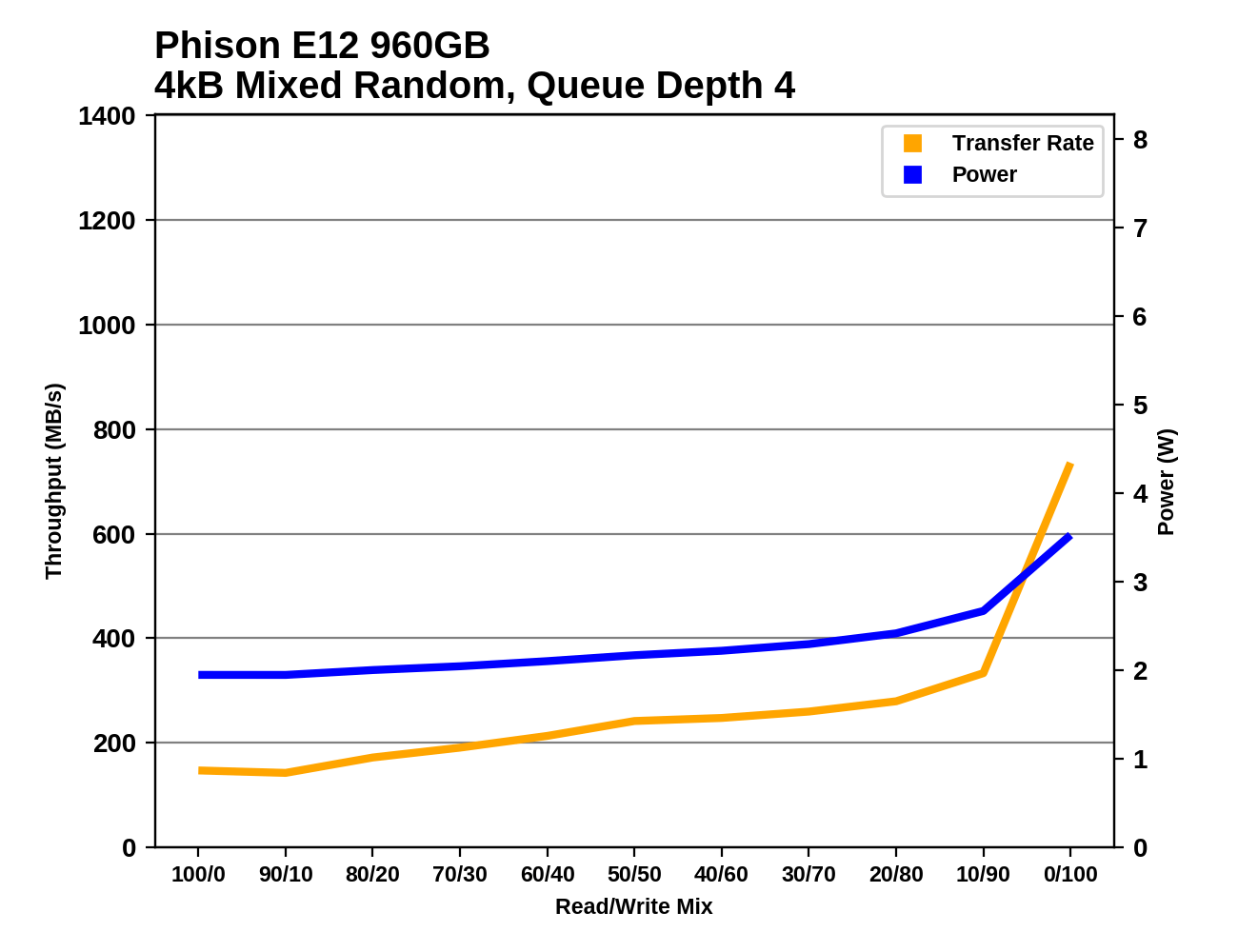 |
|||||||||
The Phison E12 gains performance slowly as the test progresses from pure reads toward write-heavy workloads. At the very end of the test the high random write speed of the Phison E12 helps bring the average up, but not enough to overcome the drives that show much more pronounced performance growth throughout the test.
Mixed Sequential Performance
Our test of mixed sequential reads and writes differs from the mixed random I/O test by performing 128kB sequential accesses rather than 4kB accesses at random locations, and the sequential test is conducted at queue depth 1. The range of mixes tested is the same, and the timing and limits on data transfers are also the same as above.
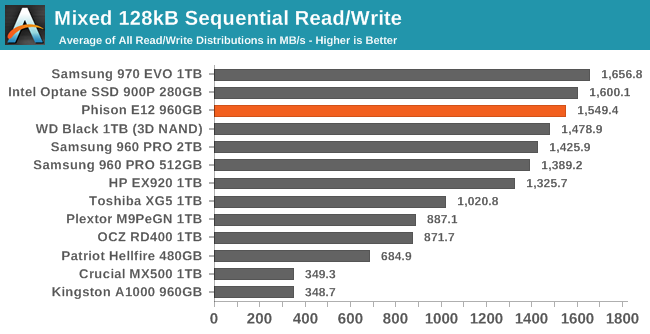
The mixed sequential I/O performance of the Phison E12 is very good, beating all TLC drives except the Samsung 970 EVO, which is only about 7% faster overall.
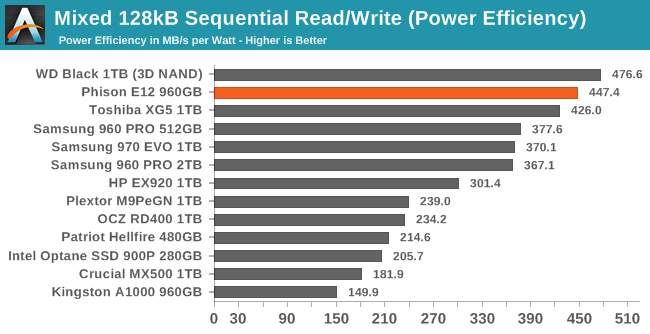 |
|||||||||
| Power Efficiency in MB/s/W | Average Power in W | ||||||||
The power efficiency of the Phison E12 on the mixed sequential test is again very good, but still can't match the WD Black. Toshiba/SanDisk BiCS3 3D TLC seems to be very efficient for sequential I/O, but Phison's controller is a bit more power-hungry than Western Digital's in-house controller.
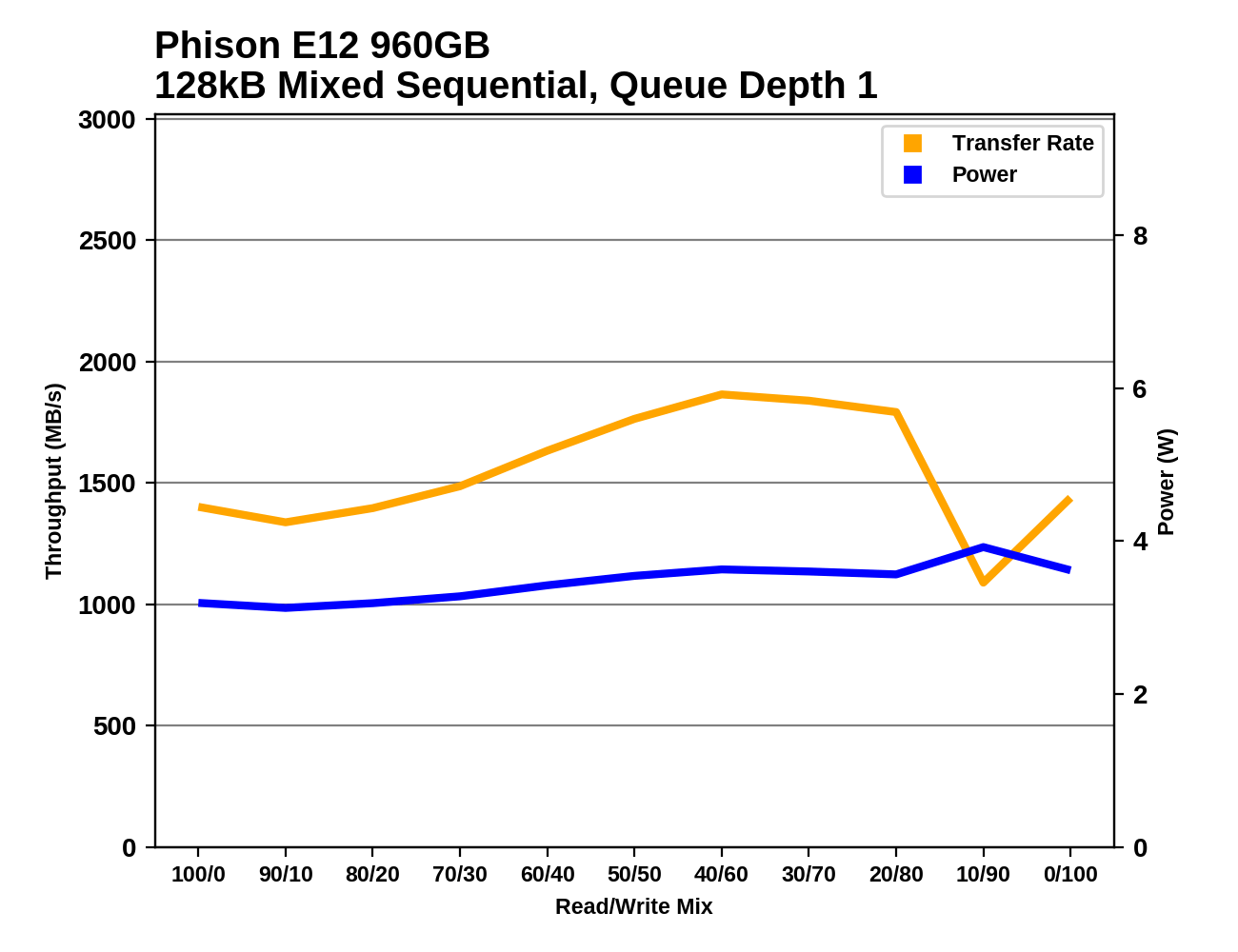 |
|||||||||
The Phison E12 starts the test with a middling sequential read speed, but it barely loses any performance when writes are added to the mix and instead turns around to deliver modest performance growth, peaking in the second half of the test when most drives are at their worst. Near the end, the write volume is high enough that the E12's slow garbage collection begins to hurt performance.










28 Comments
View All Comments
DigitalFreak - Wednesday, July 18, 2018 - link
Another high end competitor is always a welcome site. Hopefully it will push prices down further.Mikewind Dale - Wednesday, July 18, 2018 - link
And that idle power consumption is great. Looks like we have a great SSD for laptops.Amoro - Wednesday, July 18, 2018 - link
Wonder why they didn't use DDR4L?FATCamaro - Wednesday, July 18, 2018 - link
All DDR4 is the same. There are only improvements in LPDDR4 which I haven’t seen anywhere yetIII-V - Wednesday, July 18, 2018 - link
DDR4L operates at a lower voltage, and consumes 80% of the power of DDR4. Where LPDDR shines is with standby power, which is far lower than DDR4 and DDR4L.bug77 - Wednesday, July 18, 2018 - link
For laptops, SATA will always be the less power hungry choice.Death666Angel - Thursday, July 19, 2018 - link
If you can do more tasks in the same amount of time, I think a lot of people will not mind a fractional increase in power consumption. How much of a fraction is the SSD power consumption on modern laptops anyway? LCD should still be #1 over the course of a full battery charge.bug77 - Thursday, July 19, 2018 - link
It's about idle power. It's higher on PCIe.And you can rarely get more things done on a NVMe drive, 4k random reads are only slightly better than AHCI. And 4k random reads is what you do most of the time ;)
Lolimaster - Thursday, July 19, 2018 - link
And unless you want a desktop replacement laptop nvme makes very little sense for 95% of the users (5% being 4k video editiors).bug77 - Friday, July 20, 2018 - link
There could be that some laptops only have M2 slots for expansion?